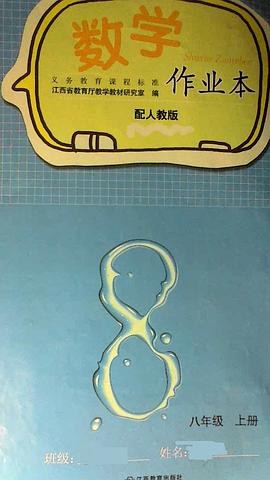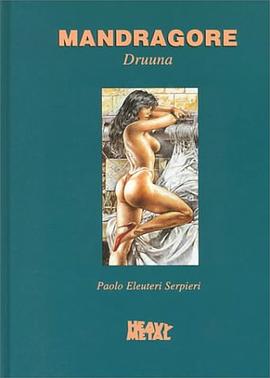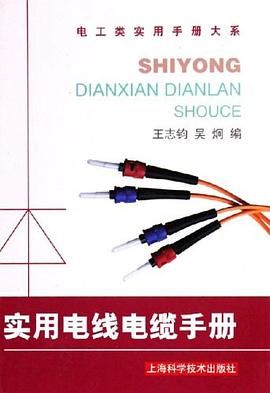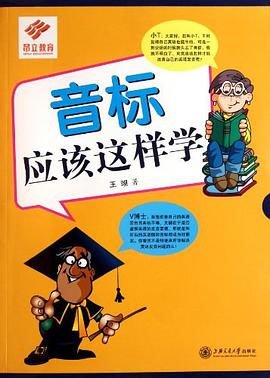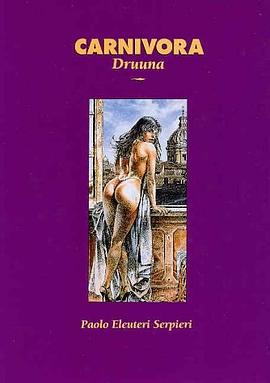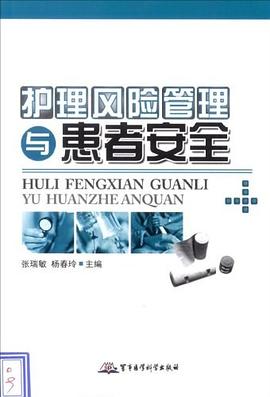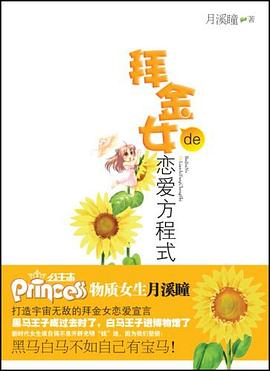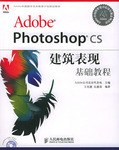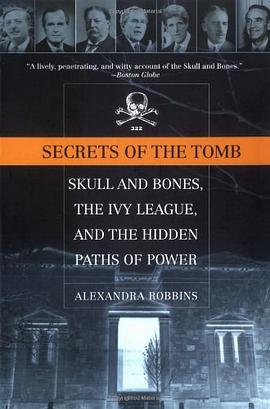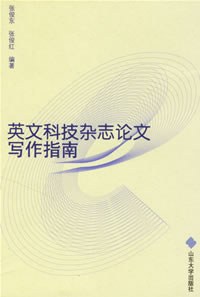

具体描述
《光电子技术专业英语》是光电子技术方面的专业英语教材。《光电子技术专业英语》主要介绍了科技英语的特点、翻译方法和技巧,半导体物理和器件,电磁场和电磁波,光学原理,激光原理,非线性光学原理,集成电路制备,光通信,全息数据存储,光镊,光子晶体光纤,科技文献检索以及英语科技论文写作等内容。每一章分别从基本概念、原理;分类、技术优势和挑战等方面对现有的光电子技术进行阐述。
《光电子技术专业英语》可作为高等院校电子科学与技术、光学工程、光信息科学与技术、光学等专业的本科生以及研究生的教材和参考书,也可作为非光电子类读者了解光电子学基本知识的参考书,还可作为读者投稿国际光电子类学术期刊的“投稿指南”。
作者简介
目录信息
第1章 科技英语翻译技巧 1.1 科技英语概念 1.2 科技英语文体总貌 1.3 科技英语词汇特点 1.4 科技英语翻译方法和技巧 1.4.1 科技英语翻译标准 1.4.2 科技英语翻译过程中语法特点 1.4.3 科技英语的翻译方法与技巧 1.5 提高科技英语翻译能力的途径 第2章 semiconductor physics and device 2.1 semiconductor materials 2.2 type of solids 2.3 crystal structure 2.4 the atomic structure of semiconductors 2.4.1 electron shells and orbits 2.4.2 valence electrons, conduction electrons, and ions 2.4.3 metallic bands 2.4.4 covalent bonds 2.4.5 electrons and hole current 2.5 the pn junction 2.5.1 doping 2.5.2 the pn junction 2.5.3 the depletion region 2.6 biasing the semiconductor diode 2.6.1 forward bias 2.6.2 reverse bias 2.6.3 peak inverse voltage (piv) 2.6.4 reverse breakdown 2.7 semiconductor device-bjt and fet 2.7.1 bipolar junction transistor 2.7.2 field-effect transistor 2.8 semiconductor applications 2.9 semiconductor competition 第3章 electromagnetic field and electromagnetic wave 3.1 the concept of electromagnetic fields and waves 3.2 history of electromagnetic wave 3.3 basic laws of electromagnetic theory 3.3.1 faraday's induction law 3.3.2 gauss's law-electric 3.3.3 gauss's law-magnetic 3.3.4 ampere's circuital law 3.3.5 maxwell's equations 3.4 properties of electromagnetic wave 3.4.1 wave model 3.4.2 particle model 3.4.3 speed of propagation 3.5 electromagnetic spectrum and applications 第4章 fundamentals of optics 4.1 a brief history about optics 4.1.1 the views of the antique philosophers 4.1.2 classical optics 4.1.3 modern optics 4.1.4 moving bodies optics 4.2 contents of optics 4.2.1 rectilinear propagation of light 4.2.2 reflection and refraction 4.2.3 interference and diffraction 4.3 optics systems 4.3.1 telescopes 4.3.2 retinal acuity 第5章 fundamentals of lasers 5.1 definition of laser 5.2 a brief history of laser 5.3 principle of laser generation 5.3.1 spontaneous and stimulated emission, absorption 5.3.2 the laser idea 5.3.3 pumping schemes 5.4 structure and properties of laser 5.4.1 structure of laser 5.4.2 properties of laser beams 5.5 lasers types 5.6 application of laser 5.6.1 industrial applications 5.6.2 medical applications 第6章 nonlinear optics 6.1 definition of nonlinear optics 6.2 history of nonlinear optics 6.3 features of interaction of intense light with matter 6.4 theory framework of nonlinear optics 6.5 descriptions of nonlinear optical processes 6.5.1 second-harmonic generation 6.5.2 frequency mixing generation 6.5.3 sum-frequency generation 6.5.4 difference-frequency generation 6.5.5 optical parametric oscillation 6.5.6 third-order nonlinear optical processes 6.5.7 intensity-dependent refractive index 6.5.8 third-order interactions 6.5.9 parametric versus nonparametric processes 6.5.10 saturable absorption 6.5.11 two-photon absorption 6.5.12 stimulated raman scattering 6.6 application and outlook 第7章 integrated circuit fabrication 7.1 the concept of integrated circuit 7.2 history of integrated circuit 7.3 integrated circuit fabrication 7.3.1 integrated circuit design 7.3.2 the manufacturing process 7.4 application 7.5 the future 第8章 optical communications 8.1 the system model 8.2 optical transmitters 8.3 the transmitted optical field 8.4 stochastic fields 8.5 the optical channel 8.5.1 the unguided (space) channel 8.5.2 the guided (fiberoptic) channel 8.6 the detected optical field 8.7 background radiation 8.8 photodetection 8.9 optical intersatellite links 第9章 holographic data storage 9.1 the concept of holography 9.2 history of holographic data storage 9.3 principle of holographic data storage 9.4 theory about formation and reconstruction of a hologram 9.4.1 volume grating and bragg diffraction 9.4.2 born's approximation 9.4.3 coupled wave theory 9.5 hardware for holographic data storage 9.6 coding and signal processing 9.6.1 binary detection 9.6.2 interpixel interference 9.6.3 error correction 9.6.4 predistortion 9.6.5 gray scale 9.6.6 capacity estimation 9.7 associative retrieval 9.8 recording materials 9.9 two-color or photon-gated holography 第10章 optical tweezers 10.1 concept of optical tweezers 10.2 history of optical tweezers 10.3 basic theory of optical tweezers 10.4 system of optical tweezers 10.5 application of optical tweezers 10.6 future of optical tweezers 第11章 photonic crystal fiber 11.1 the origins of pcfs 11.1.1 conventional optical fibers 11.1.2 photonic crystal 11.1.3 from conventional optical fibers to pcfs 11.2 the history of pcfs 11.3 guiding light in pcfs 11.3.1 modified total internal reflection 11.3.2 photonic bandgap guidance 11.4 properties of pcfs 11.4.1 solid core pcfs 11.4.2 hollow core pcfs 11.5 fabrication of pcfs 11.5.1 stack-and-draw technique 11.5.2 extrusion fabrication process 11.6 application of pcfs 11.6.1 high power and energy transmission 11.6.2 fiber lasers and amplifiers 11.6.3 gas-based nonlinear optics 11.6.4 supercontinuum generation 11.6.5 telecommunications 11.6.6 optical sensors 11.6.7 gratings in pcf 11.7 future perspectives 第12章 科技文献检索 12.1 信息检索的含义 12.2 信息检索的基本原理 12.3 检索语言 12.4 文献检索工具 12.4.1 检索工具应具备的条件 12.4.2 检索工具的类型 12.5 检索文献资料的途径 12.6 文献检索的基本方法 12.7 文献检索的一般步骤 12.8 文献数据库检索 12.8.1 检索工具的类型 12.8.2 国内主要资源 12.8.3 国外主要资源 12.8.4 进人数据库的方法和思路 12.9 其他检索文献途径 第13章 英语科技论文写作 13.1 科技论文的概念和特点 13.2 如何撰写英语科技论文 13.2.1 构建论文写作提纲 13.2.2 撰写英语科技论文 13.3 英语科技论文的写作技巧 13.4 投稿过程 13.5 论文发表后的工作 附录a 常用前缀、后缀和构词成分 附录b 常用数学符号及数学式表达 附录c 常用的符号和单位 c-1 si base units c-2 si prefixes c-3 directly derived unit c-4 special names of derived unit c-5 units to be discouraged or abandoned c-6 some physical constants 附录d sci收录的光电类期刊 d-1 530物理学 d-2 537光学 d-3 539应用物理学 d-4 730电工与电子技术 d-5 736电子技术 附录e 2009年ei收录的中国科技期刊(光电类可投期刊)
· · · · · · (收起)
· · · · · · (收起)
读后感
评分
评分
评分
评分
评分
用户评价
评分
sb
评分sb
评分sb
评分sb
评分sb
相关图书
本站所有内容均为互联网搜索引擎提供的公开搜索信息,本站不存储任何数据与内容,任何内容与数据均与本站无关,如有需要请联系相关搜索引擎包括但不限于百度,google,bing,sogou 等
© 2026 book.quotespace.org All Rights Reserved. 小美书屋 版权所有


